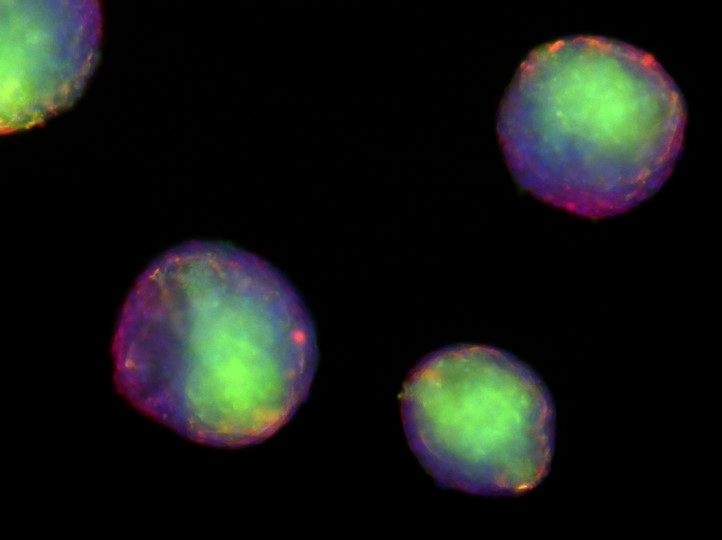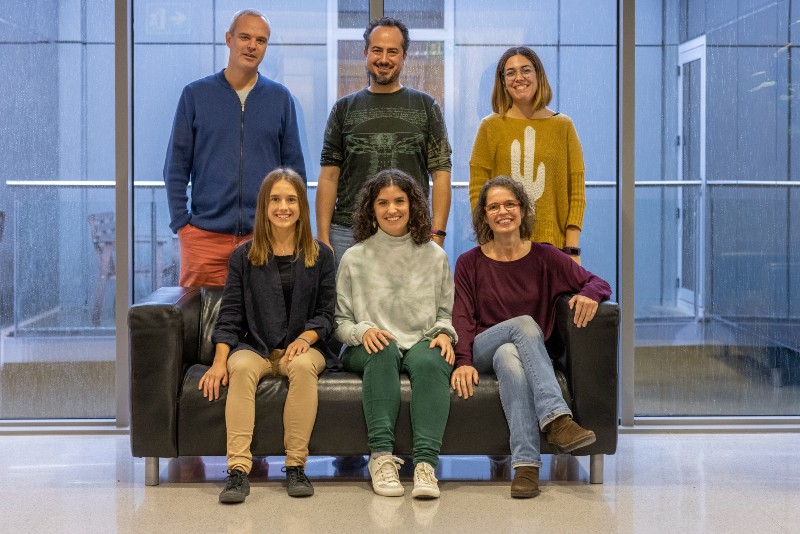The generation of human neurofibromas in mice opens the door to testing new treatments

The Hereditary Cancer Group have published a study in Cell Reports in which they describe the generation of a model system based on induced pluripotent stem cells (iPSCs) that is able to generate human neurofibromas in mice. These tumours arise in people with the genetic disease Neurofibromatosis Type 1, a prevalent condition occurring in one in every 3,000 people. To date, a robust method for generating human neurofibromas in mice has been lacking, and the model developed opens up the possibility of testing new treatments for these tumours.
 The study, with first author Helena Mazuelas, represents a major step forward in the modelling of these tumours. The originality of the work lies in the use of a 3D culture system, composed of Schwann cells derived from human iPSCs, together with fibroblasts isolated from patients' tumours. The resulting spheres are called neurofibromaspheres. The advantage of this new model is that in vitro, many can be generated and studied, so many drugs can be evaluated at once. In addition, when grafted onto the sciatic nerve of a mouse, they are able to generate human neurofibromas, proving that these neurofibromaspheres represent a reliable model. Finally, in this work, cell heterogeneity within neurofibromas has also been studied, based on single-cell analysis, which helped to have a clearer and more complete radiography of the cell composition within them. Undoubtedly, this new model will help to better understand these tumours and to analyze potential new drugs.
The study, with first author Helena Mazuelas, represents a major step forward in the modelling of these tumours. The originality of the work lies in the use of a 3D culture system, composed of Schwann cells derived from human iPSCs, together with fibroblasts isolated from patients' tumours. The resulting spheres are called neurofibromaspheres. The advantage of this new model is that in vitro, many can be generated and studied, so many drugs can be evaluated at once. In addition, when grafted onto the sciatic nerve of a mouse, they are able to generate human neurofibromas, proving that these neurofibromaspheres represent a reliable model. Finally, in this work, cell heterogeneity within neurofibromas has also been studied, based on single-cell analysis, which helped to have a clearer and more complete radiography of the cell composition within them. Undoubtedly, this new model will help to better understand these tumours and to analyze potential new drugs.
This work was carried out in collaboration with the Hereditary Cancer Unit of the l'Institut Català d'Oncologia (ICO)-IDIBELL, the Regenerative Medicine Program of the IDIBELL, the Center for Genomic Regulation (CRG-CNAG) and the Pathological Anatomy Service at the Vall d'Hebron Hospital amongst others. The work was mainly financed by the Neurofibromatosis Therapeutic Acceleration Program (NTAP) de la Johns Hopkins University School of Medicine, USA.
We are also grateful to the Fundación Proyecto Neurofibromatosis, the Asociación de Afectados de Neurofibromatosis (AANF), and the Catalan Neurofibromatosis Association (ACNefi) for their constant support.
Original Article
Modeling iPSC-derived human neurofibroma-like tumors in mice uncovers the heterogeneity of Schwann cells within plexiform neurofibromas
Helena Mazuelas, Míriam Magallón-Lorenz, Juana Fernández-Rodríguez, Itziar Uriarte-Arrazola, Yvonne Richaud-Patin, Ernest Terribas, Alberto Villanueva, Elisabeth Castellanos, Ignacio Blanco, Ángel Raya, Jakub Chojnacki, Holger Heyn, Cleofé Romagosa et al.
Cell Reports, 15 February 2022,DOI:https://doi.org/10.1016/j.celrep.2022.110385
